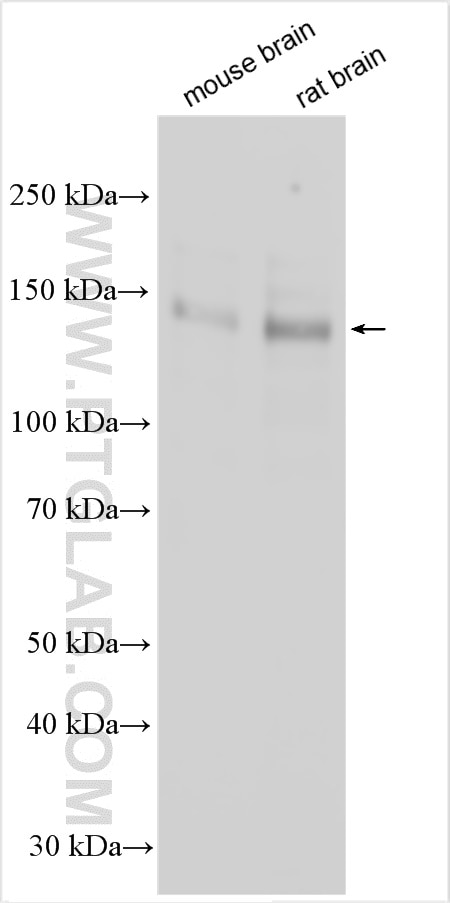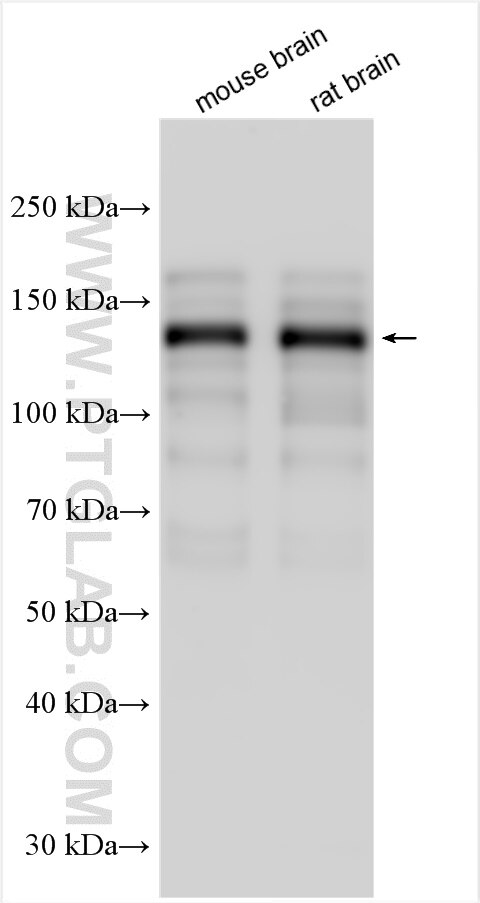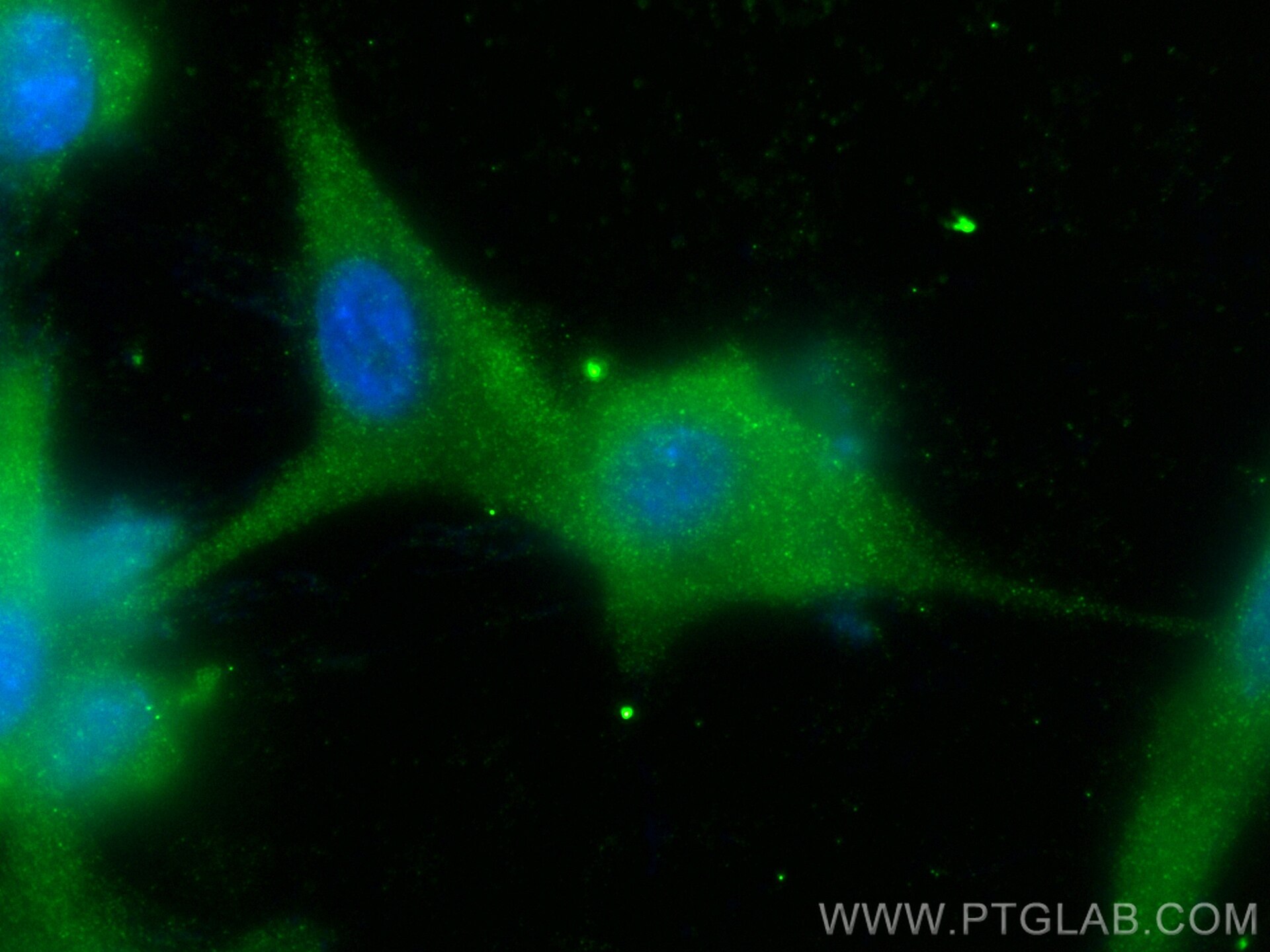MAGI2 Polyklonaler Antikörper
MAGI2 Polyklonal Antikörper für WB, IF/ICC, ELISA
Wirt / Isotyp
Kaninchen / IgG
Getestete Reaktivität
human, Maus, Ratte
Anwendung
WB, IF/ICC, ELISA
Konjugation
Unkonjugiert
Kat-Nr. : 25189-1-AP
Synonyme
Geprüfte Anwendungen
| Erfolgreiche Detektion in WB | Maushirngewebe, Rattenhirngewebe |
| Erfolgreiche Detektion in IF/ICC | U-87 MG-Zellen |
Empfohlene Verdünnung
| Anwendung | Verdünnung |
|---|---|
| Western Blot (WB) | WB : 1:5000-1:50000 |
| Immunfluoreszenz (IF)/ICC | IF/ICC : 1:50-1:500 |
| It is recommended that this reagent should be titrated in each testing system to obtain optimal results. | |
| Sample-dependent, check data in validation data gallery | |
Veröffentlichte Anwendungen
| WB | See 1 publications below |
Produktinformation
25189-1-AP bindet in WB, IF/ICC, ELISA MAGI2 und zeigt Reaktivität mit human, Maus, Ratten
| Getestete Reaktivität | human, Maus, Ratte |
| In Publikationen genannte Reaktivität | Maus |
| Wirt / Isotyp | Kaninchen / IgG |
| Klonalität | Polyklonal |
| Typ | Antikörper |
| Immunogen | MAGI2 fusion protein Ag18279 |
| Vollständiger Name | membrane associated guanylate kinase, WW and PDZ domain containing 2 |
| Berechnetes Molekulargewicht | 1455 aa, 159 kDa |
| Beobachtetes Molekulargewicht | 140 kDa |
| GenBank-Zugangsnummer | BC150277 |
| Gene symbol | MAGI2 |
| Gene ID (NCBI) | 9863 |
| Konjugation | Unkonjugiert |
| Form | Liquid |
| Reinigungsmethode | Antigen-Affinitätsreinigung |
| Lagerungspuffer | PBS with 0.02% sodium azide and 50% glycerol |
| Lagerungsbedingungen | Bei -20°C lagern. Nach dem Versand ein Jahr lang stabil Aliquotieren ist bei -20oC Lagerung nicht notwendig. 20ul Größen enthalten 0,1% BSA. |
Hintergrundinformationen
MAGI proteins are scaffolding proteins, belonging to the Membrane-Associated Guanylate Kinase Inverted proteins of the MAGUK family. There are three members of the MAGI subfamily, MAGI-1, MAGI-2, and MAGI-3. They are comprised of 6 PDZ domains, 2 WW domains, and 1 GUK domain. They have been proven to mediate the transport and signal transduction of various G protein-coupled receptors (GPCRs) (PMID: 29625175). The antibody is specific to MAGI2.
Protokolle
| PRODUKTSPEZIFISCHE PROTOKOLLE | |
|---|---|
| WB protocol for MAGI2 antibody 25189-1-AP | Protokoll herunterladen |
| IF protocol for MAGI2 antibody 25189-1-AP | Protokoll herunterladen |
| STANDARD-PROTOKOLLE | |
|---|---|
| Klicken Sie hier, um unsere Standardprotokolle anzuzeigen |




